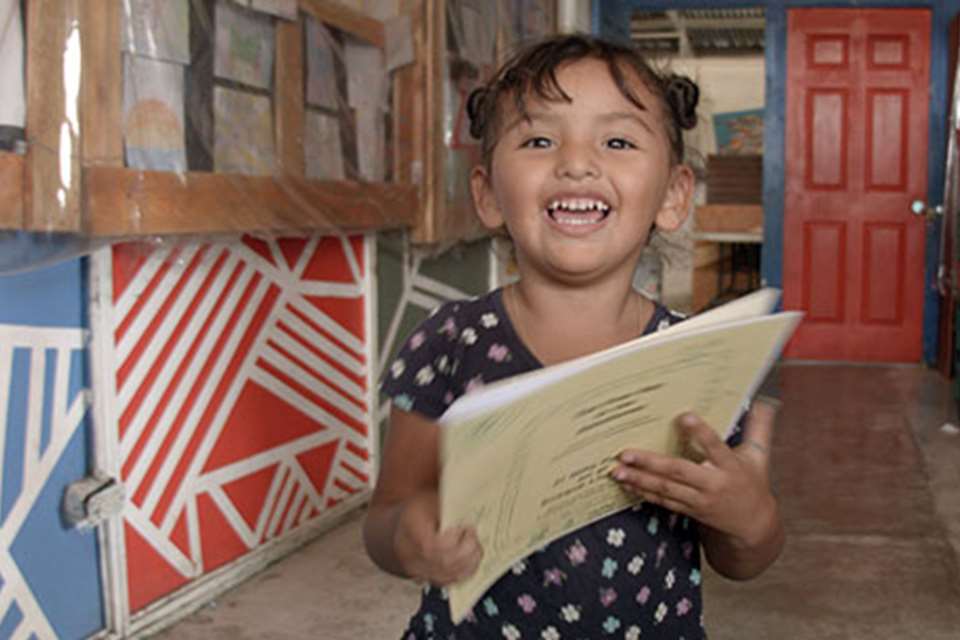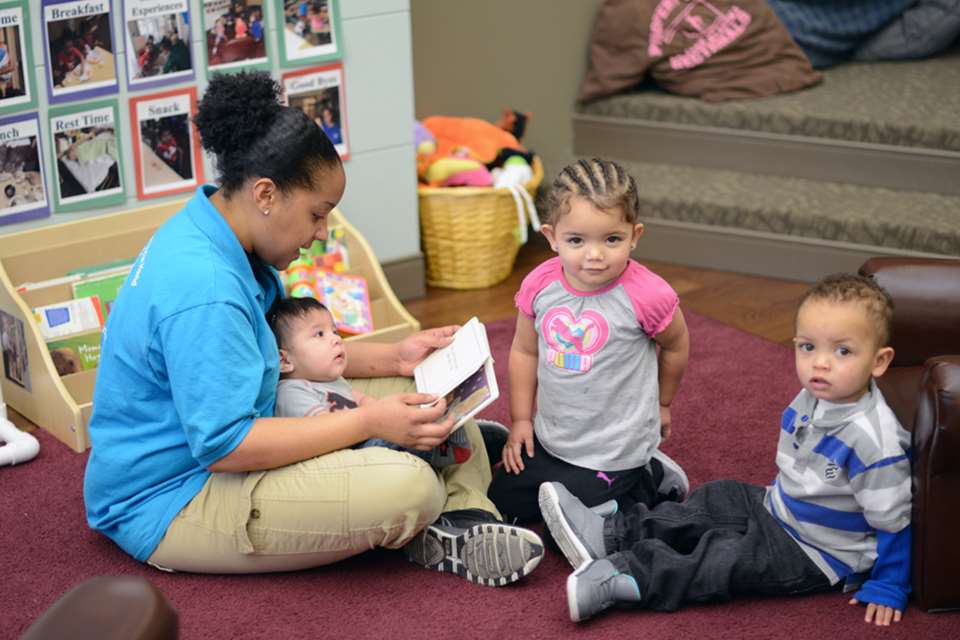International - Child at Street 11
Anne O’Connor
Monday, October 28, 2019
‘The people that society wants for tomorrow are in Child at Street 11 today’ – Anne O’Connor went to meet them and learn about this Singapore centre’s ‘pedagogy of possibilities’

On a recent professional trip to Singapore, I was lucky enough to be introduced to Vashima Goyal and the pre-school centre that she has been mentoring for 18 years. Named by the children, Child at Street 11 is in the district of Ang Mo Kio, a bus ride away from the skyscraper financial buildings and hotels of wealthy Singapore.
The centre was opened in 1999 and is a multi-racial, secular, independent, non-profit organisation. The centre serves children from low-income families living in challenging circumstances, where self-esteem is low and motivation is limited.
Parents pay what they can afford for a full-day programme for children aged two to six, as well as wraparound care for older children up to the age of 12. There is also a small daycare unit for babies.
SENSITIVE AND APPROACHABLE
The focus is on providing not just a good early education for children who are more likely to have difficulties later in school, but also on supporting parents to provide a safer and happier home environment. It offers an integrated multi-agency approach that includes trained early childhood educators, social workers, educational psychologists and doctors.
The centre prides itself on providing an inclusive and rich learning environment in which children and families are supported by sensitive and approachable adults and where children are helped to grow up emotionally healthy as well as literate and intellectually capable.
There is a strong partnership with parents, which is reinforced through the documentation of children’s experiences, including creative project work and publication of books, written and illustrated by the children.
One of the key aspects of the centre’s approach to working with families is to help parents appreciate their children’s strengths and raise their own aspirations.

 WORLDS BEFORE WORDS
WORLDS BEFORE WORDS
What I saw when I arrived reminded me so much of the early years provision in schools in the boroughs of East London where I had been privileged to work in the 1980s and 1990s. The large room was divided into bays with lots of floor space for activities and had a ‘workshop/atelier’ feel to it.
Children’s artwork and projects were displayed on walls and surfaces and there was much ‘work in progress’ dotted around the room, with children’s framed photos alongside to identify who was in the middle of something and that it was not to be disturbed! A list of ‘words to remember’ related to learning experiences were chosen and hand-written by the children.
There was a strong emphasis on learning about the world before the words. There was a small room set aside for projects – art materials, household and other recyclable resources were stored accessibly and in plentiful supply both here and in other corners of the centre.
Lunch was self-service with adult support and both the kitchen and the ‘kitchen aunties’ were very visible to the children as a result of the huge window and Perspex gates that had been created in the partition wall. This allowed even the youngest children to be totally involved with all the activity in the kitchen while still maintaining health and safety.
After lunch, each child went off to shower, the youngest ones being helped by staff until they were able to do it for themselves. Then the children pulled out their own mattresses and found a quiet place anywhere in the room to have a nap, or just lie down and relax. Lights were dimmed and blinds drawn and staff were on hand to provide back rubs, sing lullabies or read stories.
COMMUNAL GARDEN
The weather in Singapore is hot and humid and often rainy, which can have an impact on outdoor play, but the centre has verandahs for outside resources and a communal garden shared with the residents of the neighbouring tower blocks, where all of the children also live.

Old folk take their regular walks around the school building and local people walk through the garden, while the children are playing (with supervision) outside. Singapore is very much a rule-driven society and yet it is a joy to see how excessive safeguarding restrictions and guidelines don’t exist to separate the children from older people.
The baby room was a delightful floor-based space with large windows and lots of natural light. A screen showed a loop of recent photos in the setting for parents to see as they arrived. Although the baby room is across the courtyard in the ground floor of a neighbouring tower block, it is managed by a very experienced kindergarten teacher who maintains strong connections between the two bases, which helps children to transition smoothly into the pre-school at age two.
BREAKING THE CYCLE OF POVERTY
In a city where supplementary ‘schools’ for maths, literacy, music and exam tutoring abound in every shopping mall in every district in Singapore, Child at Street 11 is unusual in its child-centred focus on independent thinking and the social and emotional development of its children.
Vashima, a qualified Montessori teacher with a wide knowledge and experience of other early education approaches including Reggio Emilia, talks of how the ‘Pedagogy of Possibilities’ is the thread that runs through the centre from the youngest baby to the oldest 12-year-old in the after-school provision.
The staff are trained at various levels and with a wide and impressive range of experience, but all share a similar vision for the children and their families: ensuring access to quality education and integral support programmes to help young children from low-income and vulnerable families ‘break out of the poverty cycle in one generation’.
The centre at Street 11 works closely with local and global businesses that not only provide funds and resources (for example, lots and lots of shoe boxes from a shoe company!) but also invite the children to come and talk about their projects.
A mixed-age group had recently been to the offices of a world-famous financial organisation to do a presentation about their dinosaur project, so they were ‘old hands’ and very confident when it came to telling me all about it!
This confidence in themselves as learners, and as citizens of Singapore with something to offer society, is very much at the heart of the work at Child at Street 11. Many of these children (and their parents) have experienced trauma and challenging circumstances and would normally have low expectations of their ability to thrive in the competitive global society that epitomises modern-day Singapore.
INDEPENDENT THINKING
The country certainly recognises the value of early education and is preparing to increase the number of state-funded early years settings across the whole of Singapore. Currently, just over half of all pre-school places are government supported and there are plans to increase the number of government-supported choices of pre-schools to 80 per cent.
 Certificates and diplomas in Early Childhood Care and Education are delivered through accredited training agencies. But, as is sadly still the case with many highly industrialised countries, despite the lip-service given to the value of play and the importance of children’s well-being, there is still a strong, overriding push towards early academic success at the expense of children’s physical and emotional health and development.
Certificates and diplomas in Early Childhood Care and Education are delivered through accredited training agencies. But, as is sadly still the case with many highly industrialised countries, despite the lip-service given to the value of play and the importance of children’s well-being, there is still a strong, overriding push towards early academic success at the expense of children’s physical and emotional health and development.
Child at Street 11 is seen by many to be innovative in its approach to supporting vulnerable children, and yet in many ways it is not so much innovating approaches as embracing tried-and-tested ways of building strong foundations for life, in children who might otherwise be living insecurely on very shaky ground.
Through the power of warm relationships, independent thinking and creative expression, it is nurturing strong, healthy, empathic children with an enthusiastic and confident outlook on life and an emotional resilience that tells them they are OK, regardless of what life might throw at them.
The centre’s website states that, ‘The people that society wants for tomorrow are in Child at Street 11 today.’ In these uncertain times, isn’t this what we should all be aiming for in our schools and early years settings?
MORE INFORMATION
Child at Street 11, www.street11.org.sg
Download Now








